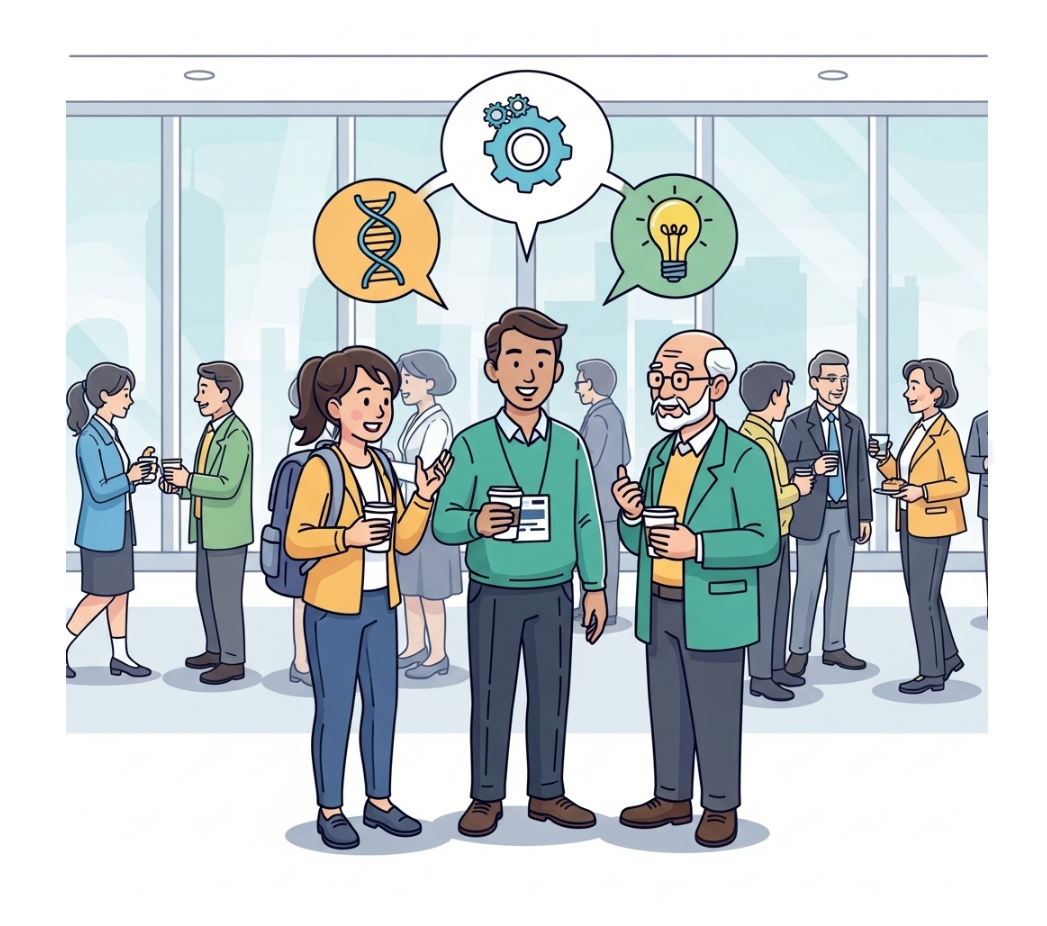

117 views||Release time: Sep 18, 2025
At any academic conference, the most career-defining moments often don't happen in the lecture hall. They happen in the queue for an espresso. The "Coffee Break," often seen as just a 20-minute pause, is actually the primary stage for networking, collaboration, and turning passive attendance into active career-building.
Many researchers, especially students and early-career academics, find this unstructured time intimidating. But with the right strategy, you can transform these short breaks into powerful opportunities. This guide will show you how to navigate the coffee break with confidence and purpose.

Phase 1: Preparation Before the Break
Success in networking begins before you even pick up a cup.
1. Set a Simple Goal Your goal doesn't have to be ambitious. It could be as simple as: "I want to meet two people whose talks I enjoyed," or "I want to ask a senior researcher a question about their lab." Having a goal prevents you from just standing in a corner checking your phone.
2. Know Who Is in the Room Spend a few minutes before the session scanning the conference program or delegate list. Identify a few key people you'd like to talk to—perhaps the keynote speaker, an author you frequently cite, or someone from a university you admire. This gives you a focus.
3. Prepare Your "Academic Elevator Pitch" You will be asked "What do you do?" hundreds of time. Have a concise, 30-second answer ready. It should include who you are, your institution, and the core question your research addresses. For example:
"Hi, I'm Alex. I'm a PhD student at the University of Singapore, and I'm currently working on using machine learning to predict material fatigue in next-generation aerospace composites."
Practice it until it sounds natural and confident.
Phase 2: Execution During the Break
This is where your preparation pays off.
1. How to Start a Conversation The easiest way to start is by finding common ground, which is the conference itself.
2. Be a Good Listener Networking is not about talking; it's about listening. Ask open-ended questions about their work:
People appreciate genuine interest far more than a monologue about your own work.
3. How to Gracefully Exit a Conversation Coffee breaks are short. It's perfectly normal and expected to move between conversations.
4. Exchanging Contact Information Instead of just asking for a card, make it specific. Say, "I'd love to read that paper you mentioned. Could I connect with you on LinkedIn or ResearchGate so I can find it?" This gives a clear reason for the connection and makes a follow-up more likely.
Phase 3: The Follow-Up
Your networking efforts are wasted if you don't follow up. Within a day or two of the conference, send a brief, personalized connection request or email. Reference your conversation:
"Hi Dr. Evans, it was a pleasure meeting you during the coffee break at the ACMAE conference. I really enjoyed our discussion about aerospace composites. I look forward to connecting."
This reinforces the connection and moves it from a brief chat to a professional contact. By treating the coffee break as a key part of the conference experience, you will leave not just with new knowledge, but with new colleagues, collaborators, and mentors.